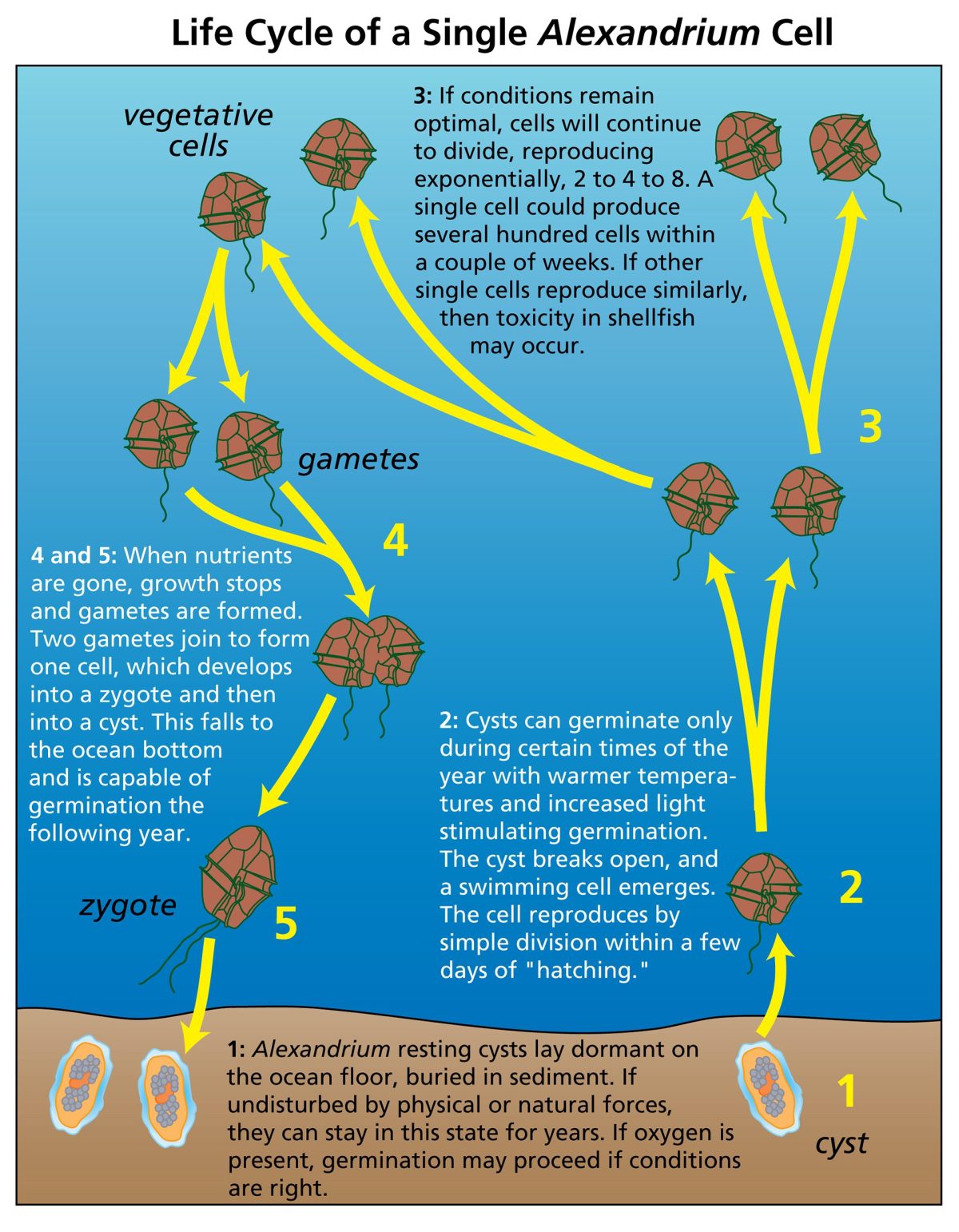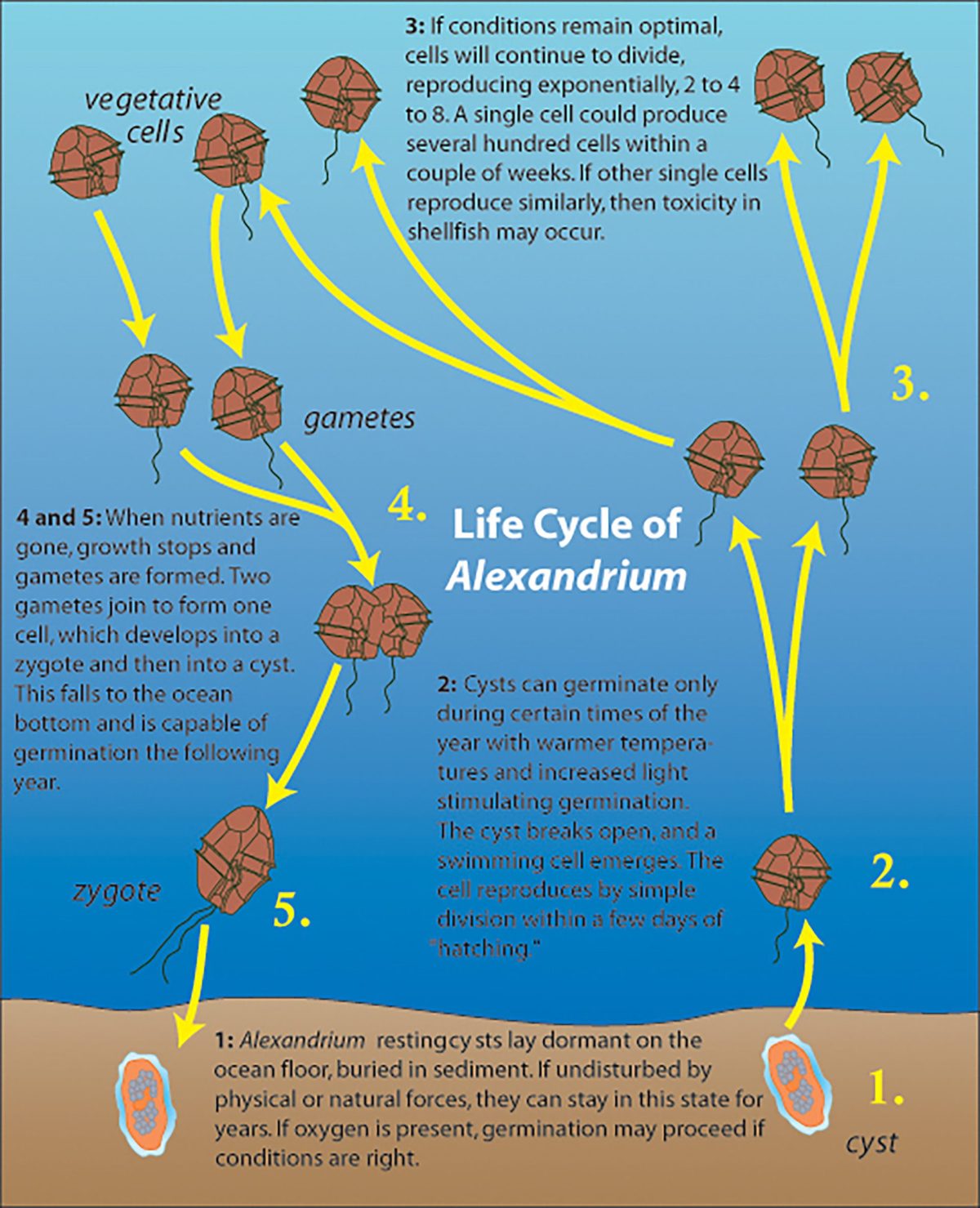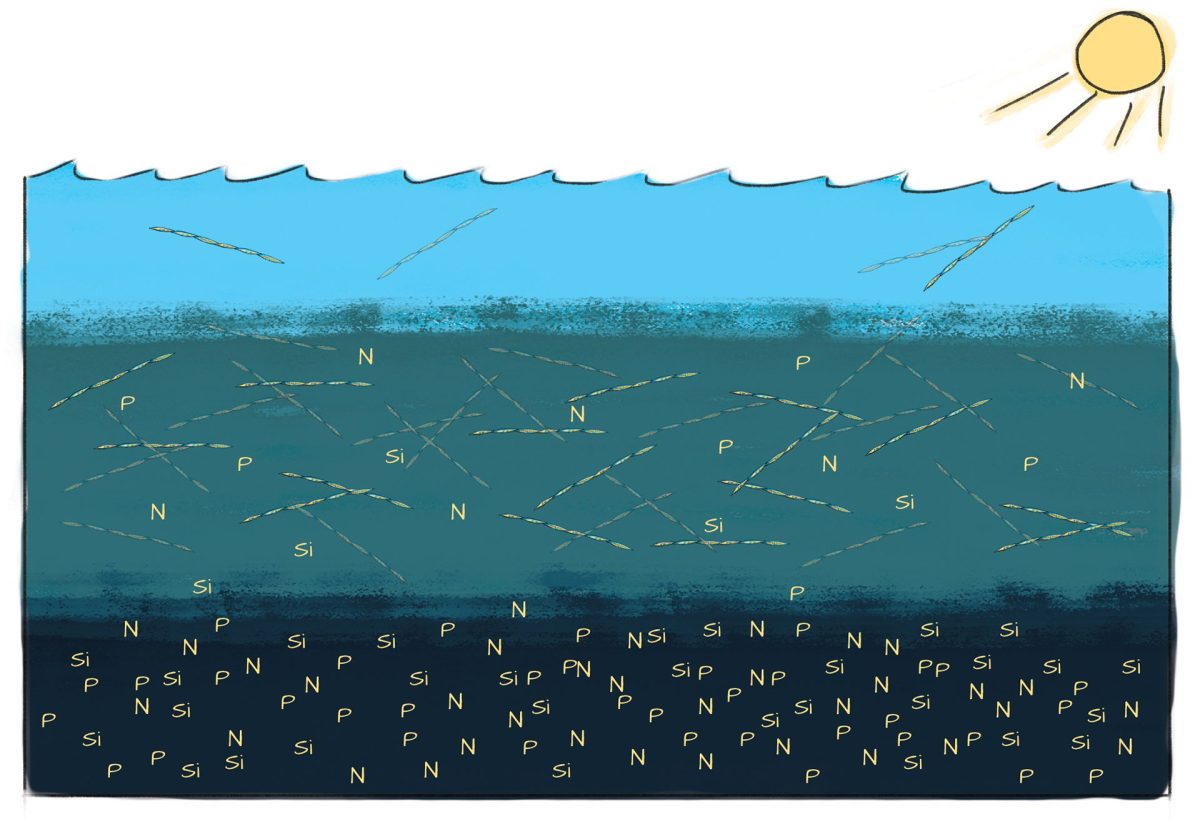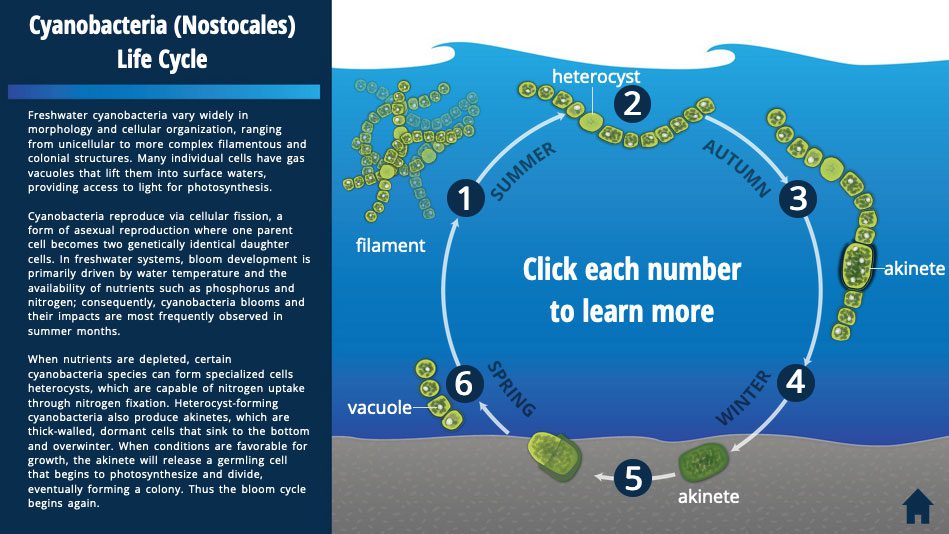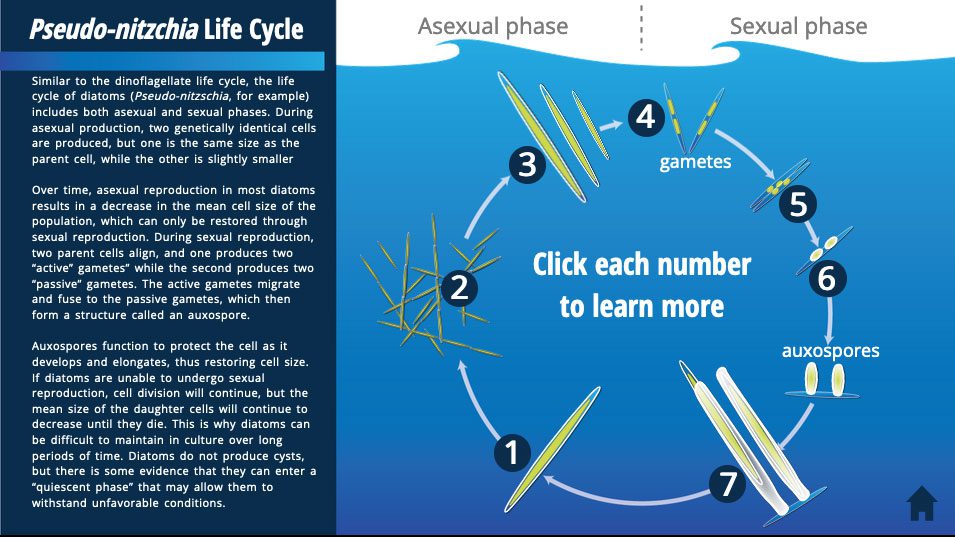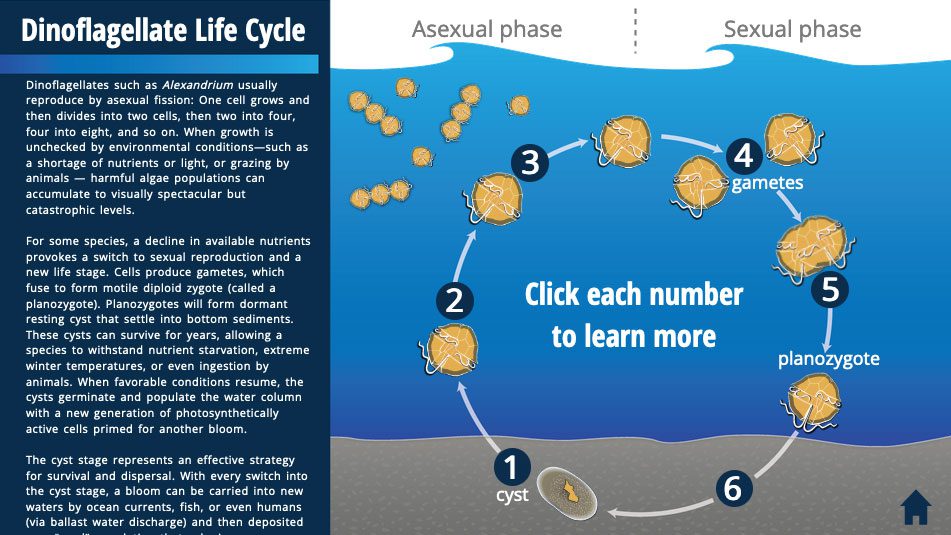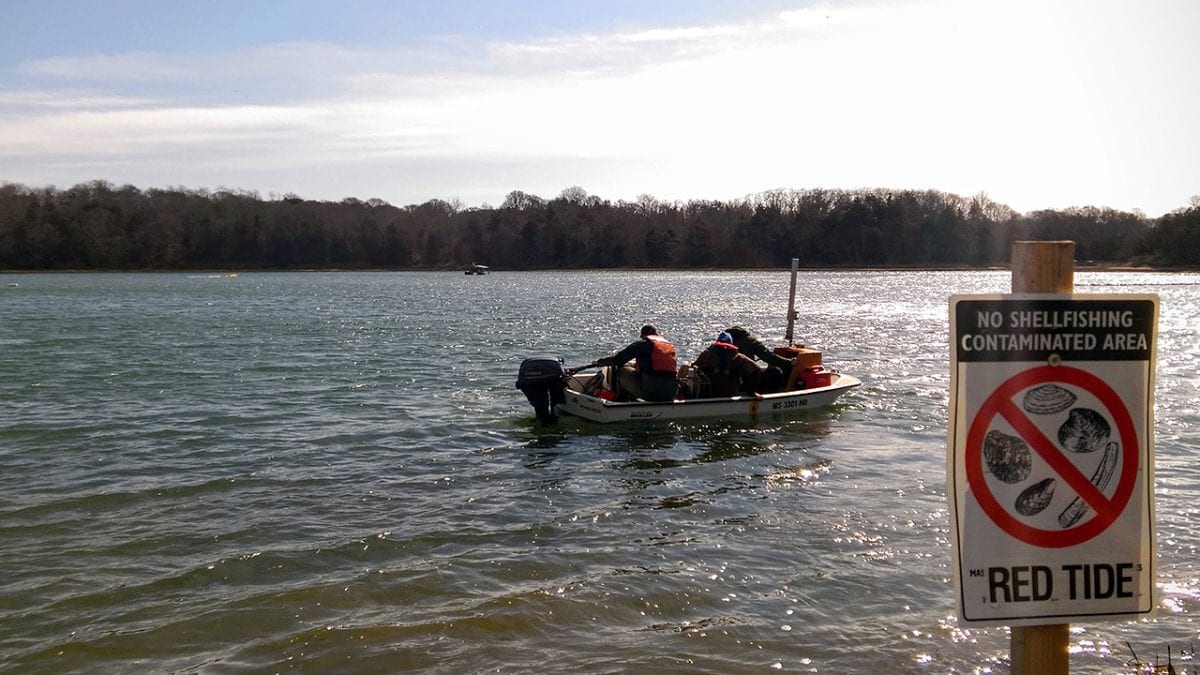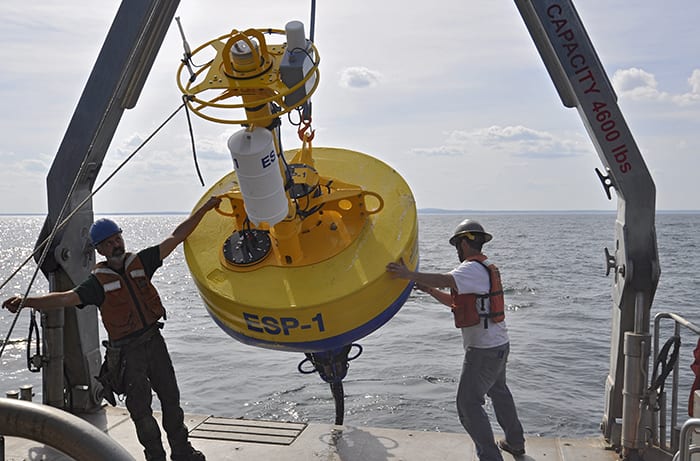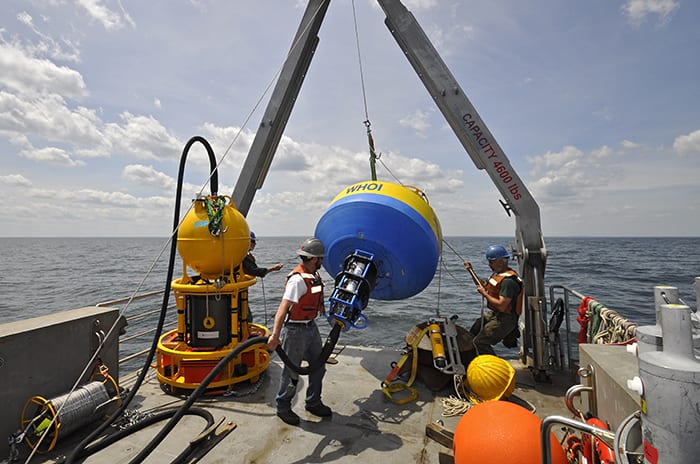In this section
Ocean Topics
- Climate & Weather
- How the Ocean Works
- Ocean & Human Lives
- Ocean Life
- Sustainable Ocean
- Ocean Tech
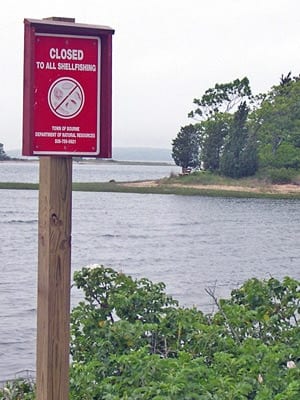
Harmful Algal Blooms (HABs) can take a variety of forms, each with a distinct and disturbing impact on human health.
Shellfish poisoning
Most shellfish filter seawater for food. As they eat, they sometimes consume toxic phytoplankton and the algal toxins accumulate in their flesh. The level of toxins can reach a threshold where they become dangerous—sometimes lethal—to humans and other animals, though not to the shellfish themselves. Shellfish poisoning syndromes can cause gastrointestinal and neurological problems, from nausea, vomiting, and incapacitating diarrhea to dizziness, disorientation, amnesia and permanent memory loss, and paralysis. Some syndromes are lethal.
Ciguatera fish poisoning
Species of the genus Gambierdiscus living in tropical waters (particularly coral reef communities) are known to produce a fat-soluble toxin that causes diarrhea, vomiting, and abdominal pain, followed by muscular aches, dizziness, anxiety, sweating, and tingling sensations. Ciguatoxin-producing algae live attached to seaweeds, and they are first consumed by plant-eating reef fishes. Those fish are in turn eaten by larger carnivorous, commercially valuable finfish. The toxin, being fat soluble, is transferred and magnified through the food chain, much as occurs with pollutants such as DDT and PCBs. That means the most dangerous fish to eat are the largest, oldest, and most desirable. Ciguatera is responsible for more human illnesses—10,000 to 50,000 cases annually—than any other kind of toxicity originating in fresh seafood.
Possible Estuary-Associated Syndrome
This vague term reflects the poor state of knowledge of the human health effects of the alga Pfiesteria piscicida and related organisms. Human exposure to these algae in estuaries has been linked to deficiencies in learning and memory, skin lesions, eye irritation, and acute respiratory distress. In 1997, a bloom of Pfiesteria caused massive fish die-offs on Maryland’s eastern shore, leading consumers to avoid all seafood from the region despite assurances that no toxins had been detected in seafood products. That single event cost at least $50 million in lost seafood sales and lost revenues for recreational boat charters.
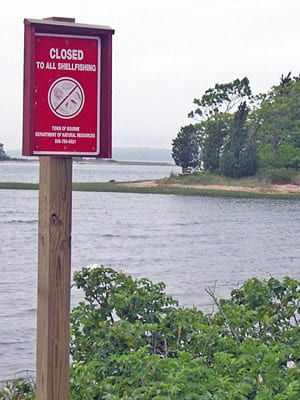
When shellfish accumulate dangerous toxins after filtering algae from water as food, public health is at risk. State and federal agencies monitor these shellfish for biotoxins and close affected areas, posting signs like this. Note that although the water appears clear, there is a danger present. (Photo by Judy Kleindinst, Woods Hole Oceanographic Institution)
Articles Related to Watch What You Eat
From Oceanus Magazine
Sargassum serendipity
A dragnet for toxic algae?
The Recipe for a Harmful Algal Bloom
As Bay Warms, Harmful Algae Bloom
Setting a Watchman for Harmful Algal Blooms
Dropping a Laboratory into the Sea
Brown Tides and Redfielders
News Releases
New harmful algal blooms report
The Detection of a Massive Harmful Algal Bloom in the Arctic Prompts Real-Time Advisories to Western Alaskan Communities
Woods Hole Center for Oceans and Human Health Receives Additional Five Years of Funding
WHOI receives NOAA awards to study, predict harmful algal blooms
NOAA awards WHOI $2.9 million for harmful algal bloom research
News & Insights
Examining Connections Between the Ocean and Human Health
Hearing on The Harmful Algal Blooms and Hypoxia Research and Control Amendments Act of 2011
Hearing on “Harmful Algal Blooms and Hypoxia: Formulating an Action Plan”
WHOI in the News
Salt pond closed for a second time by red tide toxicity
What drives the Great Atlantic Sargassum Belt
Rivers are drowning in toxic sludge
Study Estimates Economic Impacts of Harmful Algal Blooms on Razor Clam–dependent Community
Features
The shallow waters of the Stellwagen Bank create treacherous conditions that change unexpectedly and have led to numerous shipwrecks that…

The role of the ocean in human culture is profound, as people experience the sea in many ways, and respond…

The background level of radiation in oceans and seas varies around the globe. Measured in atomic disintegrations per second (Becquerels)…
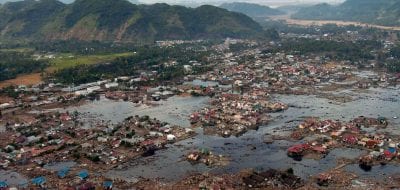
Our ocean planet is dynamic and constantly changing, sometimes resulting in dramatic threats to humans.
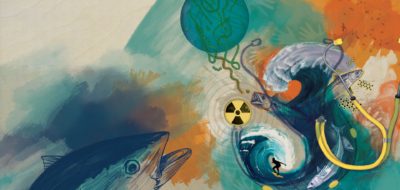
The oceans are critical to human life, and ocean scientists are working to investigate the untapped potential of the sea…
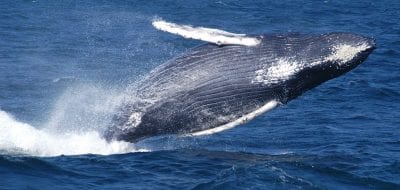
Stellwagen Bank, an underwater plateau off Boston, is a biological hotspot and key fishing ground. It's a prime whale-watching spot…
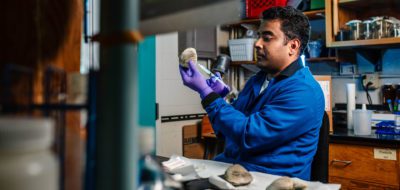
Harmful algal blooms can taint seafood with toxins, causing illness or even death. Learn how blooms affect human health through…

